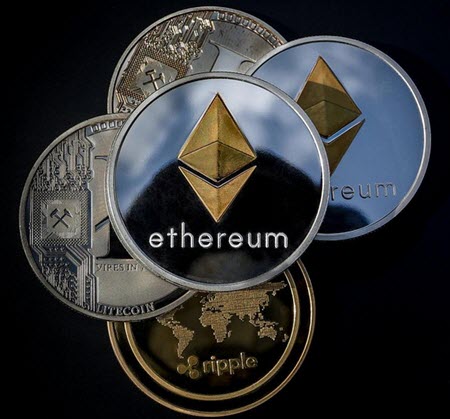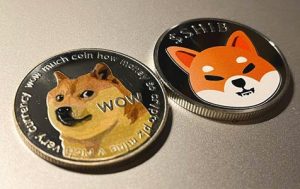The dangers of investing in Altcoins
The last few months have demonstrated the risk of investing in an altcoin. The collapse of Luna, UST, and Celcius has shown us that even large altcoins, stablecoins and seemingly collateral-based altcoins can collapse at any time.
This does not mean that you should avoid investing in altcoins. Altcoin trading can bring large profits, and buying the collapse can sometimes be very profitable. A fact that is proven by the Celcius coin (Cel) that rose to USD3.86 after haven fallen as low as USD0.70. However, that top was short-lived, and the coin has since then traded at around USD 1. This once again exemplifies the risk of investing in and trading altcoins.
Experienced investors found that the best altcoins can bring excellent returns, but they also carry significant risks. This is especially true if you employ the popular HODL strategy. HODL (HOLD) is a strategy very you buy an altcoin and hold it long-term, expecting the coin to keep increasing in value. The term HODL is a misspelt version of HOLD but is sometimes also said to mean “Hold On for Dear Life”. HODL can be very profitable if you choose the right coin but is also an extremely high-risk strategy to use when investing in altcoins since many altcoins will collapse at one point or another. Realizing your profits in an altcoin can be safer than just HODL forever. Altcoins can also be good assets to trade due to their high volatility.
What is an altcoin?
 The term altcoin commonly refers to any crypto coin or token other than bitcoin. IE is a coin that is an alternative to bitcoin.
The term altcoin commonly refers to any crypto coin or token other than bitcoin. IE is a coin that is an alternative to bitcoin.
Some people consider altcoins to be any coin other than Bitcoin and Ethereum. In other words, Bitcoin is never considered an altcoin, but Ethereum is considered an altcoin by many but not all. All other crypto coins are considered altcoins.
Different altcoins were designed and released by different developers. The developers develop the coins with different goals and visions for the coins. Some coins are meant to fill a special function while others are designed to be used in a special market. Yet other coins are simply created as another generic alternative to Bitcoin.
All too many altcoins are created simply to make the creator money. The creators of these coins promote the coins to increase their popularity and then sell their own coins on the open market. This will flood the market and make the coin worthless. This is just one of several methods a developer can use to make money at the cost of the investors. You should always be aware of scams when investing in altcoins. This is especially true if you invest in relatively new coins and ICO:s (Initial coin offerings).
The fact that an altcoin is well established in the market does not mean that it isn’t a scam. Always perform your due diligence before investing in an altcoin.
Different types of Altcoins
Altcoins can be divided into different types based on the function they fill. Below we will take a look at the most common types of coins and tokens. An altcoin can belong to more than one type at the same time.
Payment tokens
Payments tokens are tokens that are designed to function as currency and can be used to purchase things. The most well-known example of a payment token is Bitcoin.
Stablecoins
Stablecoins are coins that are designed to have a fixed value against another currency, usually USD, Bitcoin or a basket of goods. These coins are an alternative to other cryptocurrencies that often has a very volatile valuation.
Stablecoins are designed to make sure that the price does not fluctuate outside of a narrow allowed range. Stablecoins can drop in value below the price range they are designed to stay in and collapse. UST is a good example of this. Stablecoins are not risk-free investments and often offer poor returns in relation to the risk associated with the investment.
The leading stablecoin is Tether.
Security tokens
A security token is a token that corresponds to a certain asset in the real world, such as a stock or a piece of real estate. Security tokens act as securities and are regulated by the Securities and Exchange Commission.
Utility Tokens
Utility tokens are similar to payment tokens, but their use is limited to a certain network. They might be used to buy services, pay fees or redeem awards within their network. They can not be used outside the network they are designed for.
Meme coins
 Meme coins are cryptocurrencies designed as a joke or a spoof of another cryptocurrency. Dogecoin is the most well know meme coin. Shiba Inu coin is another well-known meme coin.
Meme coins are cryptocurrencies designed as a joke or a spoof of another cryptocurrency. Dogecoin is the most well know meme coin. Shiba Inu coin is another well-known meme coin.
Governance token
Governance tokens provide the holders which certain rights within a blockchain. One common example of such a right is the right to vote on changes to the blockchain.
Scam coins
Scam coins are coins that are only created to make the developer money. These coins are launched and sold through an ICO. The developers often stop supporting the community after the ICO and disappear with the money. Scam coins are often promoted by crypto gurus and influencers before and shortly after the ICO. The fact that a coin is promoted by crypto gurus and influencers does not mean that the coin is a scam, but you can not blindly trust the recommendation they give you. You have to research each coin you invest in yourself to make sure that it is not a scam.
Investing in Altcoins
If you want to invest in altcoins, you have to remember that altcoins are very high-risk investments. Altcoins should never be your main investment type. If you choose to invest in altcoins, they should be a small part of a diversified portfolio. You do not need to invest in altcoins to achieve a diversified portfolio. You can achieve this without investing in altcoins. Only invest money that you can afford to lose.
The benefit of investing in altcoins is that there are thousands of different coins to invest in, and you can earn very high returns if you skillfully choose which coins to invest in and when to enter and exit the different coins. Entering and existing coins at the right time can be hard but will give you a higher return than a buy and hold strategy if you can do it.
Many altcoins have fewer investors than bitcoin and other mainstream coins. This reduces the liquidity in the market and increases volatility. It can sometimes be hard to sell your altcoins at a certain time. The low liquidity can make it hard to exit a coin when the value drops since there are no buyers. This increases the risk of a price collapse.
It can be very hard to distinguish between different altcoins and to distinguish the good coins from the bad ones and the scams. It can therefore be very hard to make informed decisions about altcoins.
There are a large number of altcoins that are best considered to be dead coins; many of these cost their investors a lot of money when they collapsed. Dead coins can still have very vocal investors that insist that their altcoin will regain its value and go to the moon (Increase a lot in value). This can sometimes make it hard to distinguish dead coins from other altcoins. A good role of thumb is that coins that are traded at a fraction of their earlier value are dead coins.
The number of altcoins is likely to keep increasing in the future. A lot of these new coins will fail and cost their investors a lot of money. Some will survive and give their investors a good return. You will have to be lucky or invest in a diverse selection of altcoins to be able to invest in one of the coins that makes it. Investing in established coins is safer, but new ones can often give you a higher return.
Volatile altcoins can offer very good trading opportunities, and trading altcoins can be more profitable than investing in them.
What are the best altcoins?
The best altcoin to invest in depends on your personal goals and investment preferences. Some coins offer high potential returns while at the same time exposing you to high risk. Other coins expose you to less risk but offer lower returns instead.
The three largest altcoins are Ethereum, USD Coin, and Tether (USDT).